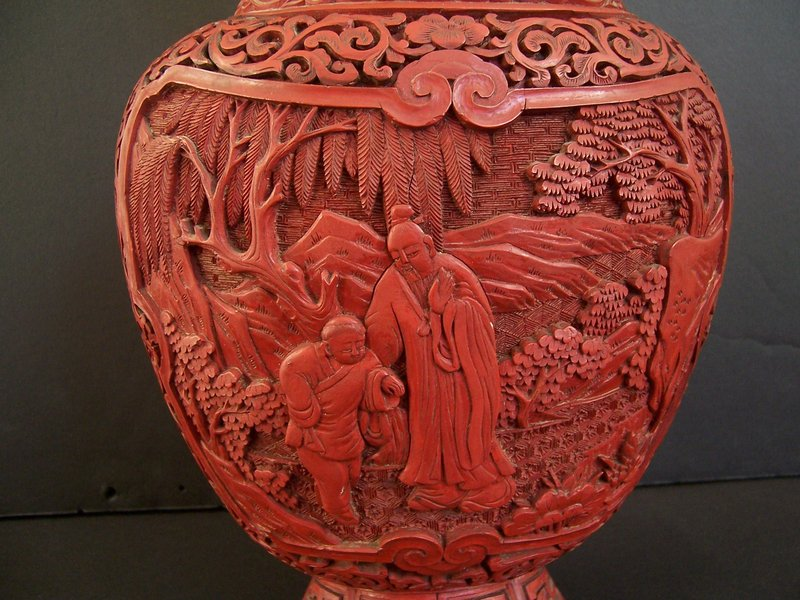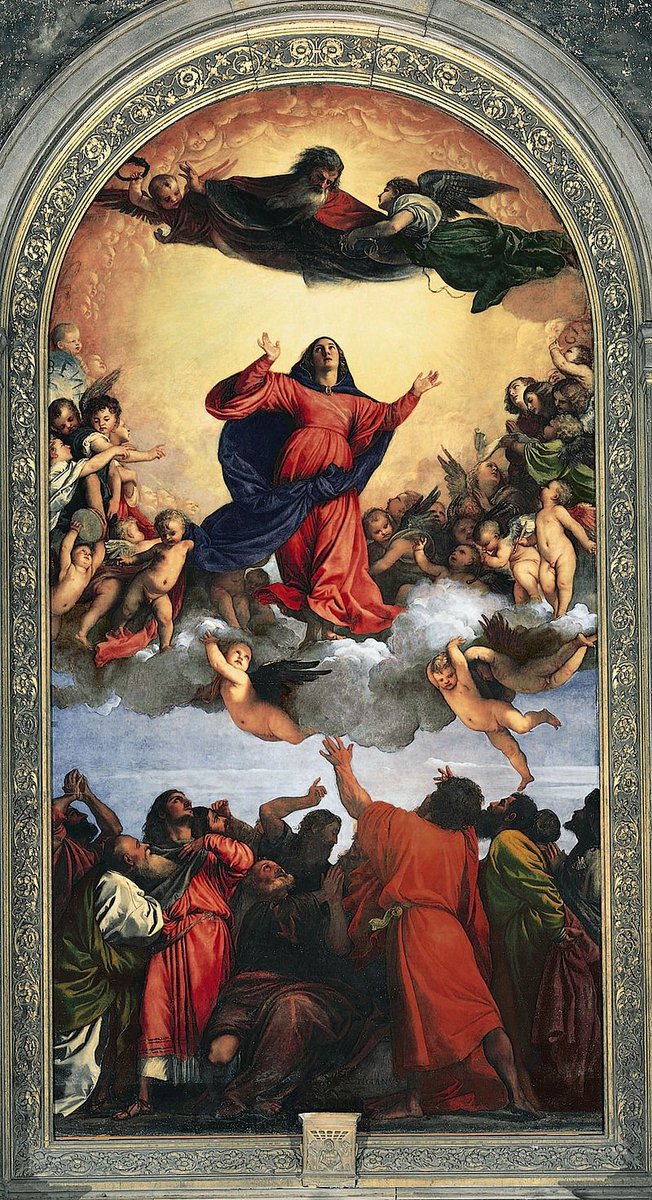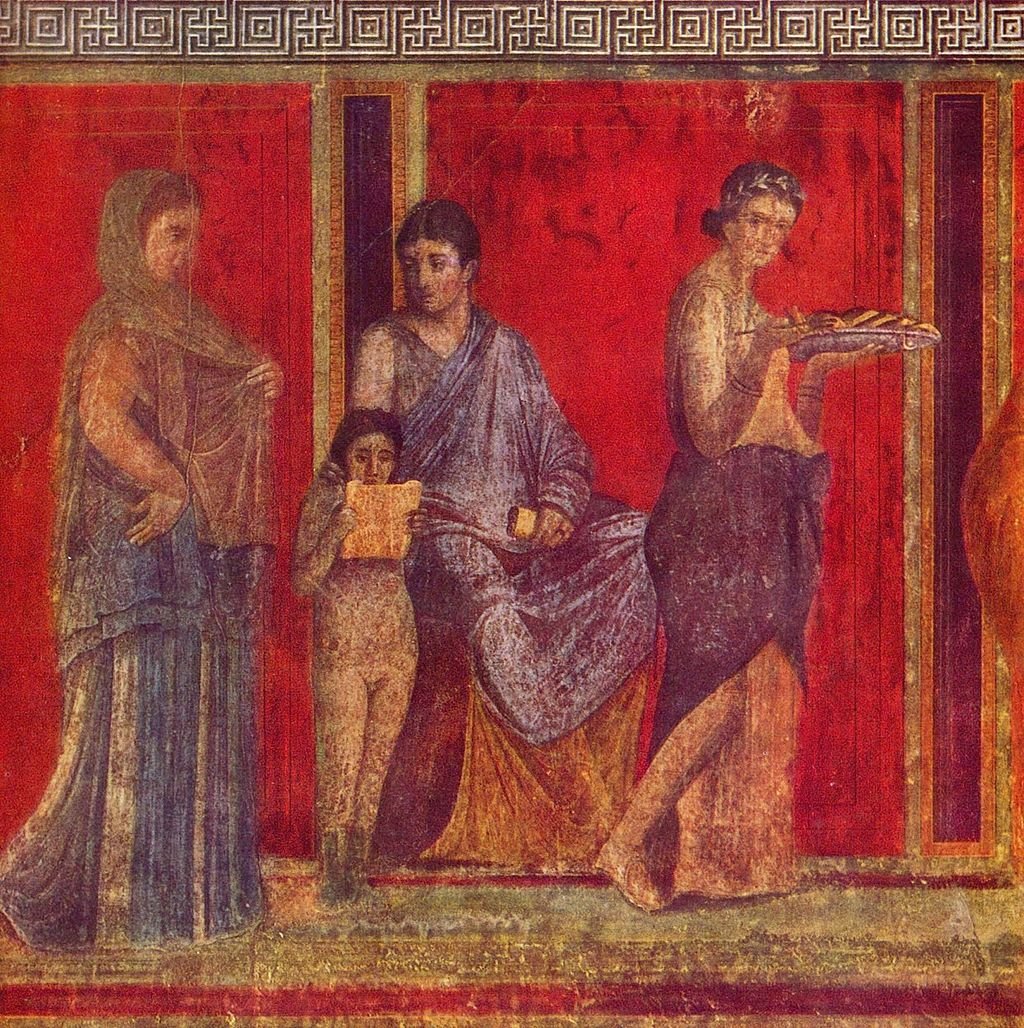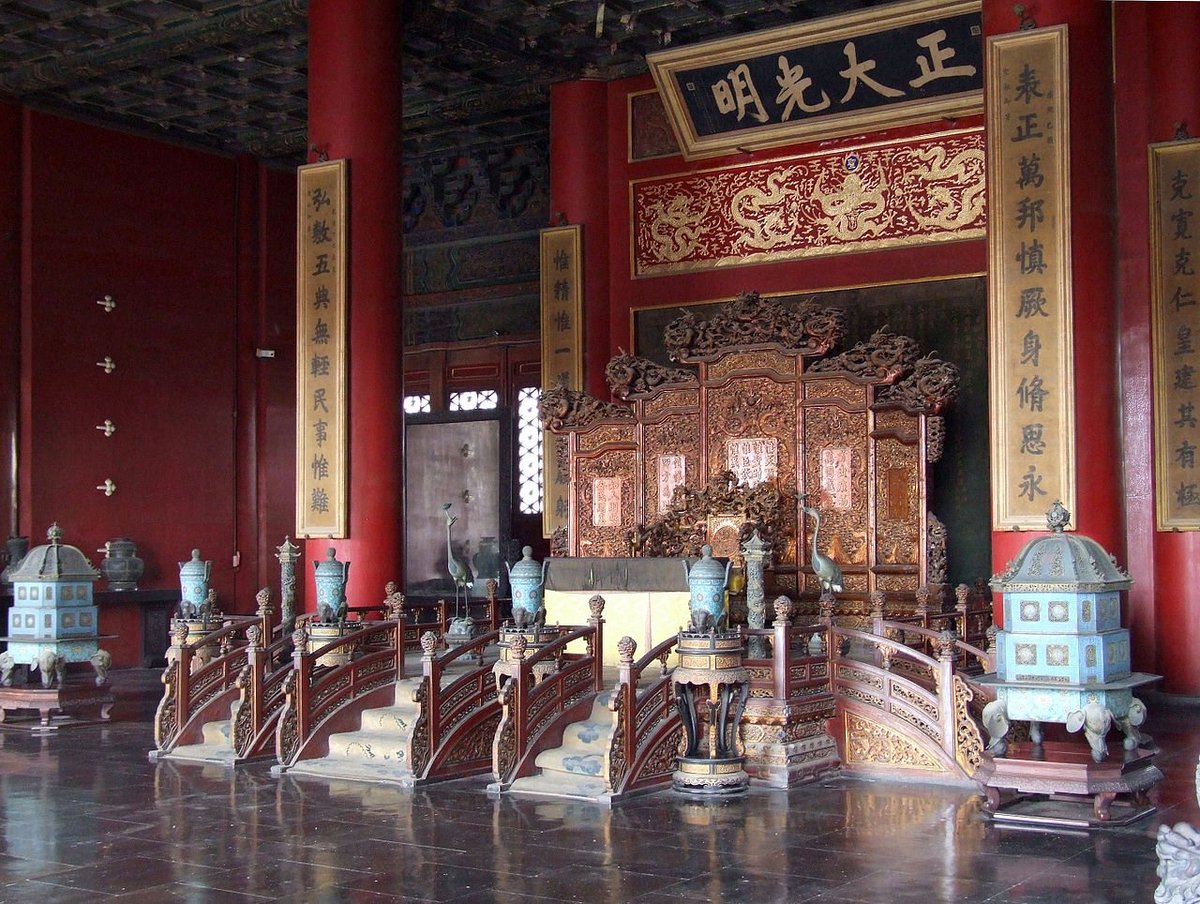The Chinese started using cinnabar colored lacquer to dye earthenware & ceramic pots into intense red works of art. The lacquer likely protected the user from the worst of mercury poisoning, but over time, it still would have been toxic.
#HistoryOfRed
#HistoryOfRed
The same red color is found in Renaissance art, where it was called vermillion, an old French word meaning "worm", referencing ancient use of insect & #39;Kermes vermilion& #39;.
Here& #39;s Titian& #39;s "Assumption of the Virgin" 1518: the reds are all cinnabar based.
#HistoryofRed
Here& #39;s Titian& #39;s "Assumption of the Virgin" 1518: the reds are all cinnabar based.
#HistoryofRed
Cinnabar was used in Indian culture.
Sindur, a dye used to mark the forehead of married women (as dot or stripes, as shown here). Today it& #39;s a synthetic version.
It& #39;s still used in the developing world for dying clothes, which exposes workers to high toxicity.
#HistoryofRed
Sindur, a dye used to mark the forehead of married women (as dot or stripes, as shown here). Today it& #39;s a synthetic version.
It& #39;s still used in the developing world for dying clothes, which exposes workers to high toxicity.
#HistoryofRed
This is a mural in the "Villa of the Mysteries" unearthed in Pompeii. The owner of the villa would have been displaying great wealth with this mural, as cinnabar / mercury ore was quite expensive, had to be shipped from Spain.
It does catch the eye, however.
It does catch the eye, however.
I& #39;ll wrap up this thread and hashtag:
The next time you see "Chinese red", I hope you& #39;ll be reminded that it& #39;s a very particular shade that Europeans called vermillion (Latin "worms") and loved to use in paintings or cosmetics, but was actually mercury sulfide.
#HistoryofRed
The next time you see "Chinese red", I hope you& #39;ll be reminded that it& #39;s a very particular shade that Europeans called vermillion (Latin "worms") and loved to use in paintings or cosmetics, but was actually mercury sulfide.
#HistoryofRed

 Read on Twitter
Read on Twitter







